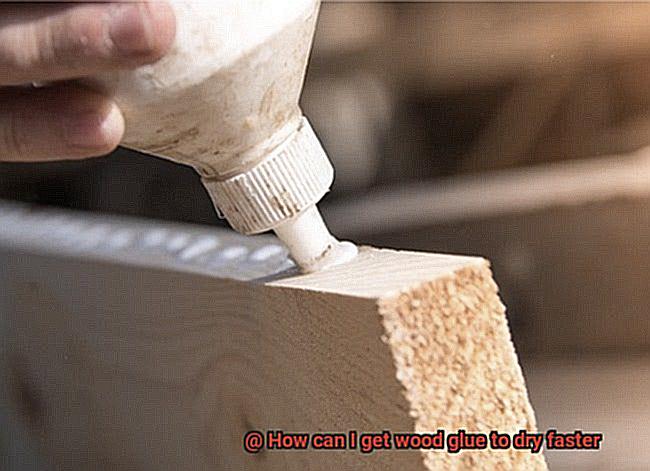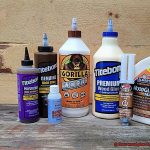Woodworking is a thrilling and rewarding hobby, but let’s face it, waiting for glue to dry can be a real buzzkill. Wet glue can be messy and time-consuming, especially if you’re eager to move on to the next step of your project. But fear not. There are ways to speed up the drying process without sacrificing the strength of your bond.
In this blog post, we’ll share some expert tips on how to get wood glue to dry faster. We’ll delve into common factors that affect the drying time of wood glue and offer practical solutions on how to work around them. Plus, we’ll highlight some of the best products available in the market that will help you accelerate the process.
Whether you’re a seasoned pro or just starting out with woodworking as a hobby, waiting for glue to dry can test your patience. But don’t worry, we’ve got you covered with our top tips that will cut your drying time in half. So grab yourself a cuppa Joe, sit back and relax while we show you how to get your wood glue dried faster than ever before.
What is Wood Glue?
Contents
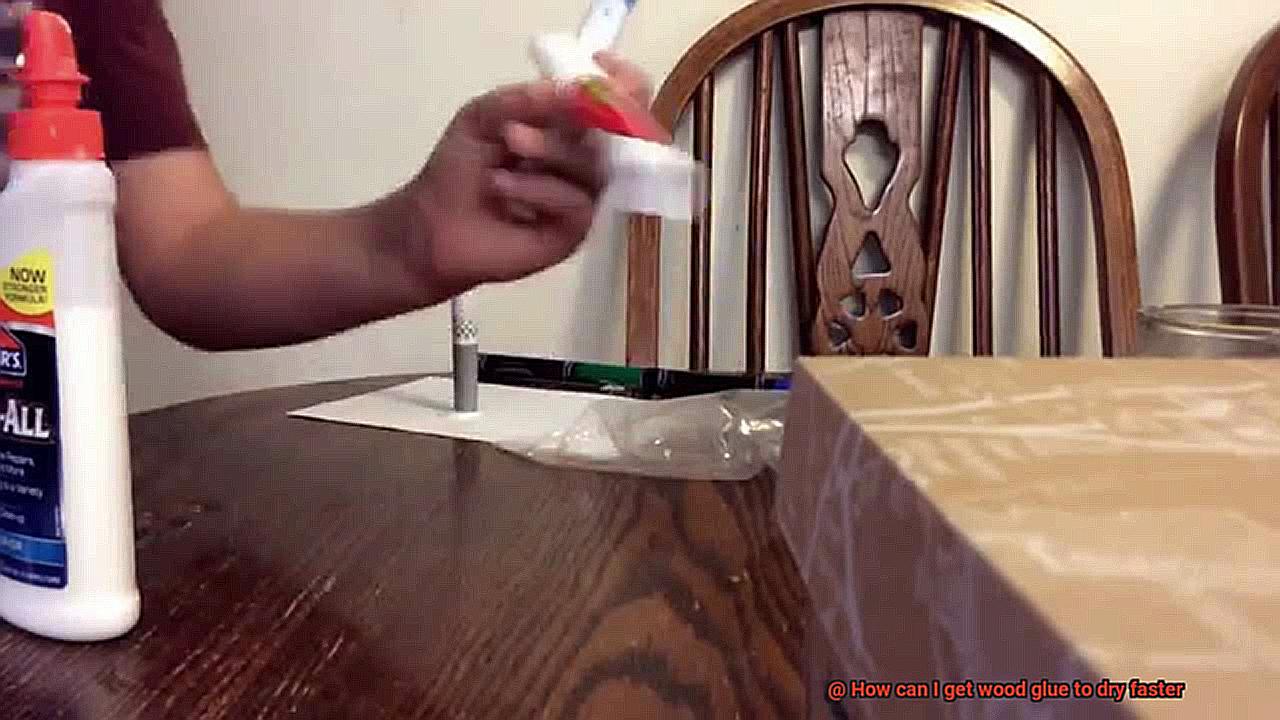
When it comes to woodworking, wood glue is an indispensable adhesive that can make all the difference between a project that falls apart and one that lasts for years. Wood glue is specifically designed to bond wood together, creating a strong and lasting bond. But not all wood glues are created equal – there are different types of wood glue available on the market, each with its own unique properties and drying times.
One of the most popular types of wood glue is PVA or polyvinyl acetate. PVA glue is a cost-effective and easy-to-use option for woodworking projects. It typically dries within 24 hours and can be sanded or painted once dry, making it a versatile choice.
For projects that require an incredibly strong bond that can withstand high stress and strain, epoxy wood glue is a go-to choice. Epoxy consists of a resin and hardener and creates an incredibly durable bond. However, its longer drying time – anywhere from 30 minutes to several hours – can be a drawback for some projects.
If speed is of the essence, cyanoacrylate or superglue may seem like an attractive option. It dries incredibly quickly and can bond wood together in seconds. However, it’s not recommended for larger woodworking projects as it can become brittle over time, potentially leading to structural failure.
While waiting for wood glue to dry can be frustrating, there are ways to speed up the process. One method is by using heat from a heat gun, hairdryer, or light bulb to evaporate the moisture in the glue and accelerate the drying process. Another technique is by adding a drying accelerator or catalyst like calcium chloride or vinegar to reduce the moisture content in the glue and hasten the chemical reaction that causes it to dry.
Why is it Important to Dry Wood Glue Quickly?
The answer is simple, my friends – drying wood glue quickly saves time, ensures a strong bond, and reduces the risk of errors. Let’s explore each of these reasons in more detail.
Time is of the essence when it comes to woodworking projects. Any delays can result in costly setbacks. Drying wood glue quickly allows you to move on to the next step of your project without wasting valuable time. As we all know, time is money, and every second counts.
Ensuring a strong bond is crucial for any woodworking project. If the glue does not dry quickly enough, it can compromise the strength of the bond. The moisture in the glue can cause the wood fibers to swell and weaken the joint over time. By drying the glue quickly, you can prevent this from happening and ensure that your joint remains strong for years to come.
Reducing the risk of errors is another important reason why drying wood glue quickly is essential. Mistakes happen, and when working with glue, they can be challenging to fix once it has dried. By drying the glue quickly, you have more time to adjust and make corrections before it dries completely. This simple step can save you from costly mistakes down the road.
To help you achieve a quick drying time for your wood glue, consider using a fan or heat source in a well-ventilated area. You may also choose to use a specialized fast-drying wood glue that provides a strong bond while reducing drying time.

Using Heat to Speed up Drying Time
That’s why many craftsmen turn to using heat to speed up the drying time. However, it’s crucial to use this technique with caution and follow proper safety precautions.
One way to apply heat is by using a heat gun – a handheld device that produces hot air and can be directed towards the glue joint. This method is perfect for small projects or repairs that require precision. But don’t linger in one spot too long – this could cause the glue to bubble or burn.
Another option is to place your glued object in a warm place, such as direct sunlight or near a heater. Keep in mind that this technique may not work as well in humid or cold environments, so consider your surroundings before attempting it.
For more advanced woodworking projects, some craftsmen use veneer hammering. This technique involves applying pressure and heat simultaneously using a special tool. It requires skill and experience, so it’s not recommended for beginners.
It’s essential to remember that while using heat can speed up drying time, excessive heat can cause the glue to dry too quickly, resulting in a weaker bond. Always follow safety precautions and use heat with care to ensure the best results for your woodworking projects.
Adding a Drying Accelerator or Catalyst
Woodworking is a delightful hobby, but waiting for the glue to dry can be frustrating. Fortunately, there is an easy solution – adding a drying accelerator or catalyst. These products are designed to speed up the drying process of wood glue, and they come in different types such as powdered accelerators, spray-on accelerators, and liquid catalysts.
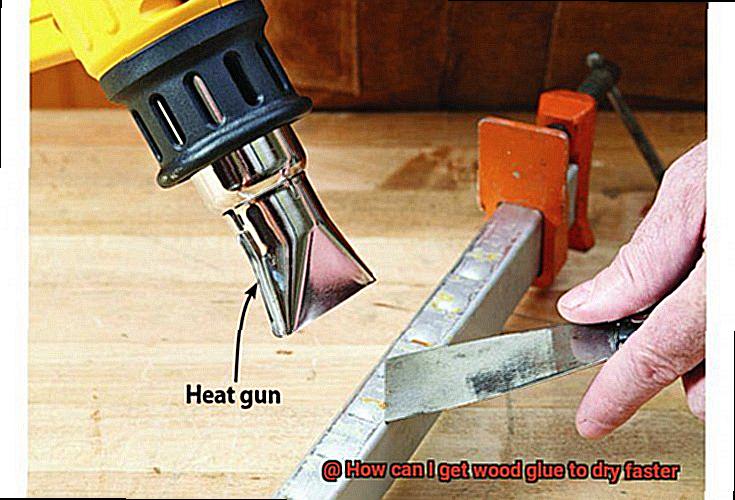
Drying accelerators work by increasing the reaction rate of the glue, which helps it dry faster. However, it’s essential to choose a product that is specifically designed for use with wood glue since some accelerators may affect the strength and quality of the bond. For example, some drying accelerators might cause the glue to become brittle or weaken over time.
When using a drying accelerator or catalyst, it’s crucial to follow the manufacturer’s instructions carefully to avoid any issues with the bond or damage to the wood itself. Overuse or improper application can lead to problems with the bond or even damage to the wood itself. Therefore, it’s essential to take caution when working with any type of chemical product and wear appropriate safety gear such as gloves and eye protection.
There are several benefits of adding a drying accelerator or catalyst to your woodworking routine. Firstly, it saves time by decreasing the amount of time it takes for the glue to dry, allowing you to move on to the next step of your project sooner. Secondly, using a drying accelerator increases efficiency since you don’t have to wait as long for the glue to dry; you can work more efficiently and get more done in less time. Lastly, adding a drying accelerator provides flexibility in your woodworking schedule since you won’t have to plan your projects around long drying times.
Fast-Drying Glues
Fast-drying glues offer a solution that can cut down the drying time from a full day to just 10-15 minutes. Let’s explore the different types of fast-drying glues and how they can be used in woodworking projects.
One of the most popular options for fast-drying glue is cyanoacrylate glue, also known as super glue. This powerful adhesive bonds quickly and cures rapidly, making it an excellent choice for those who want to speed up their woodworking process. However, it’s important to note that super glue may not be suitable for all types of woodworking projects as it can become brittle over time and may not be strong enough for heavy-duty applications.
Polyurethane glue offers another option for those seeking a fast-drying wood glue. This type of adhesive reacts with moisture in the air or on the surface of the wood to cure quickly. Not only is it fast-drying, but it’s also waterproof and can be sanded or painted over once dry. Polyurethane glue is a great option for those looking for a strong and versatile bond.
While fast-drying glues can be convenient, it’s essential to consider the specific needs of your project before choosing a type of glue. Traditional wood glue may still provide the strongest bond in some cases. Therefore, it is crucial to evaluate the strength requirements of your project before settling on a fast-drying option.
If you’re looking to speed up the drying time of traditional wood glue, you can try some tricks to accelerate the curing process. Applying heat through a heat gun or placing the glued pieces in a warm environment can help speed up the drying time. Alternatively, using a specialized accelerator spray can produce even faster results.
Advantages and Disadvantages of Each Method
There are several methods available to speed up the drying process of wood glue. However, it’s crucial to understand the advantages and disadvantages of each method before choosing the right one.
One popular method to speed up drying is by increasing the temperature in the workspace. This can be achieved by using a heat gun, hairdryer, or placing the glued object in direct sunlight. The advantage of this method is that it significantly reduces the wait time for the glue to set. However, high temperatures can cause the glue to dry too quickly, leading to brittle and weak bonds. Additionally, excessive heat can also damage the wood and cause it to warp or crack.

Another method is by using a catalyst or accelerator to the glue. These additives are designed to speed up the chemical reaction within the glue and promote faster drying times. The primary advantage of this method is that it provides a consistent and reliable way to speed up the drying process without compromising the strength of the bond. However, these additives can be expensive and may require special handling and storage requirements.
Lastly, using a different type of wood glue altogether can also help speed up drying times. For example, cyanoacrylate (super glue) dries almost instantly when exposed to air. While this may seem like an ideal solution, there are significant drawbacks as well. Super glue has a limited working time and can be challenging to manipulate once applied. Additionally, it may not be suitable for all types of wood or applications.
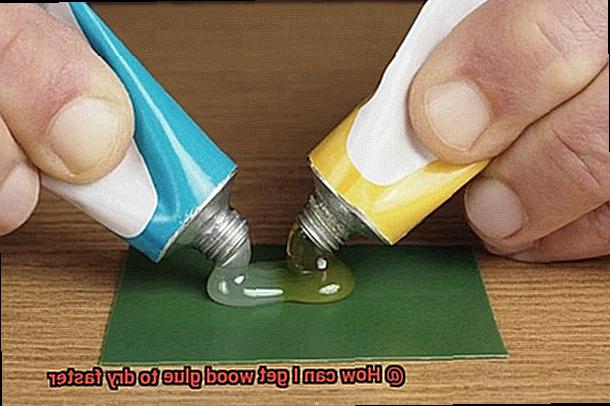
In summary, each method has its advantages and disadvantages when it comes to speeding up wood glue drying times. Increasing temperature speeds it up significantly but risks brittle bonds and warped wood; catalysts or accelerators provide a consistent way without compromising bond strength but are expensive; cyanoacrylate dries almost instantly but has limited working time and may not be suitable for all types of wood or applications. Therefore, it’s crucial to weigh the pros and cons of each method and choose the right one that will provide a strong and reliable bond while still achieving faster drying times.
Safety Precautions When Using Heat Sources
It’s tempting to resort to heat sources like hair dryers, heat guns, or ovens to speed up the process. However, safety should always be your top priority. As an expert on safety when using heat sources, I have compiled some essential tips to keep you safe while achieving faster drying times.
First and foremost, make sure your work area is well-ventilated. This will prevent any fumes from the glue or heat source from building up and becoming hazardous to your health. Keep all flammable materials away from the heat source and never leave it unattended.
When using a hair dryer or heat gun, remember to keep the tool moving constantly and avoid holding it too close to the glue. This helps prevent overheating and potentially damaging or burning the wood. If you’re using an oven, set it at a low temperature (around 150-200 degrees Fahrenheit) and let the glue dry for several hours. Do not leave the oven on for an extended period of time or leave it unattended.
Protective gear is also a must when working with wood glue and heat sources. Wear gloves and safety glasses to prevent any burns or other injuries that may occur during the drying process.
In summary, here are the safety precautions to follow when using heat sources to speed up the drying process of wood glue:
- Ensure proper ventilation in your work area
- Keep all flammable materials away from the heat source
- Never leave the heat source unattended
- Keep your tool moving constantly and avoid holding it too close to the glue
- Set your oven to a low temperature and don’t leave it unattended
- Wear protective gear such as gloves and safety glasses
q9kYrlnQups” >
Conclusion
In conclusion, waiting for wood glue to dry can be a frustrating experience, especially when you’re itching to move on to the next step of your woodworking project. But fear not. There are several methods available that can help speed up the drying process without compromising the strength of your bond.
From using heat sources like hair dryers and heat guns to adding drying accelerators or catalysts, each method has its own set of advantages and disadvantages. It’s important to choose the right method for your project by considering factors such as temperature, humidity, and specific needs.
But before you start experimenting with these methods, it’s crucial that you follow safety precautions when using heat sources and wear appropriate protective gear such as gloves and safety glasses. Safety should always come first.
By drying wood glue quickly, you’ll save time, ensure a strong bond, and reduce the risk of errors. Our expert tips on how to get wood glue dried faster than ever before will help you complete your woodworking projects with ease and efficiency. Whether you’re a seasoned pro or just starting out with woodworking as a hobby, these tips are sure to come in handy.

